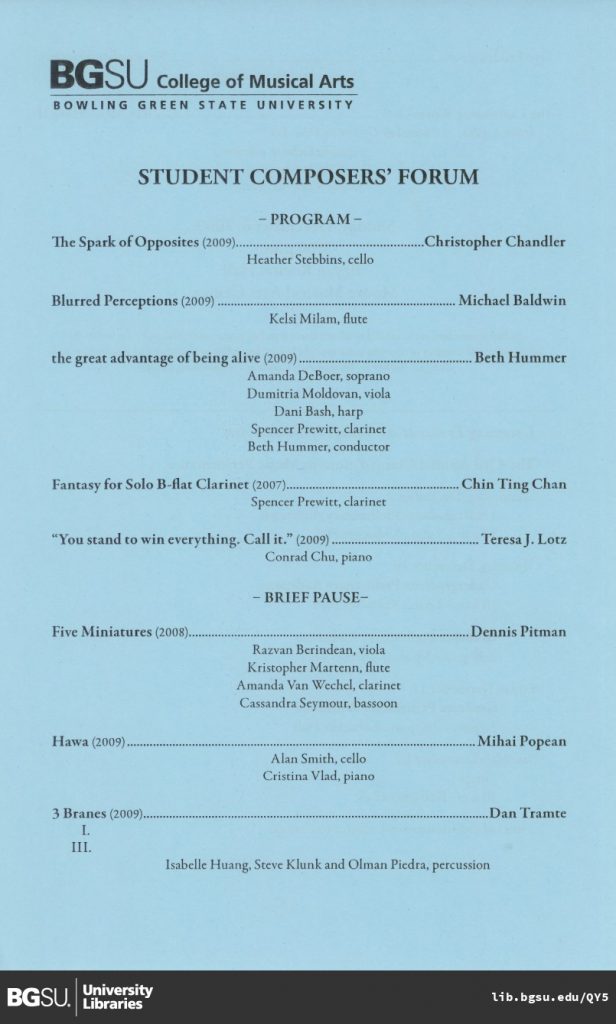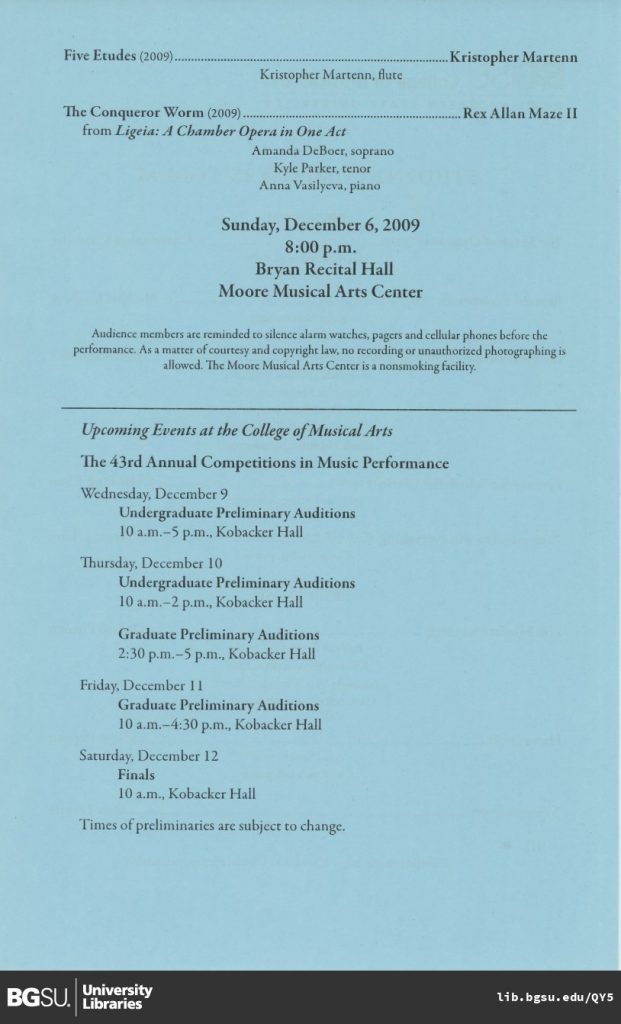Hawa (2007) (5:00) for Cello and Piano. Copyright © Mihai Popean, 2007. All Rights Reserved.

Commissioned by Rachel Pinkney at Ohio Northern University in the summer of 2007.
Program Notes:
Hawa is a poem of life and death… a cry out fueled by the dramatic emotions which arise when losing someone that has a special place in one’s heart. Hawa, (also Hawwa(h), Hawwâ’, Haou, or Awa) is the principal character of the Torah, the Old Testament and the Qur’an, (Eve in English version) supposedly the mother of all mothers, for many the very symbol of womanhood. But hawa is also the blind, strong passion of a man, which is often stronger than himself, and in the Qu’ran, in its basic meaning, has the idea of carrying towards a low level. Having such a powerfully dualistic nature, the word is susceptible to alchemy of meaning, which in turn, makes it a proper recipient for the multitude of emotional nuances that are addressed in this work.
Stage notes:
The cellist will seat in darkness and take a pose, with the right arm folded around the face, bow up. Then a single light spot will light down on the cellist.
After that, the cellist will slowly unfold and raise the unfolded arm and suddenly start the piece, attacking the first note, like a stab in a sepuku / harakiri manner. That symbolizes cessation of life, externally inflicted pain (by external conditions, factors), the cry out, turbulence, violence, swift cut of wisdom, and revelation.
The beginning is only cello, the pianist sits quietly. Then, the piano comes in seamlessly, almost from nowhere, as an expansion of the cello. That is the moment in which light will be shed on the piano as well. The sound of the piano must feel almost organically connected to the sound of the cello; their voices must speak the same language. The piano is the other life that comes and enriches the current one (cello). At the end, the piano light will disappear after its final note, taking away the other life, leaving only the cello in the light. Then, the light (symbolizes the giver and the taker) will fade out gradually and the last moments will be played in complete darkness, while the piano holds the pedal down, creating a sostenuto effect; while the last sound disappears in darkness, the cellist wraps back the right arm around the face so when the light comes back up, it will be just like everything was a dream, much like life itself.
Performances:
Festivalul internațional de muzică contemporană ONU. Rachel Pinkney, cello; Pamela Ashmore, piano. Getty College of Arts and Sciences, Dpt. of Music, Ohio Northern University, Jan. 27, 2008. Premiere.

Student Composer’s Forum, Bryan Recital Hall, Bowling Green State University, Timișoara, Dec. 9, 2009.


